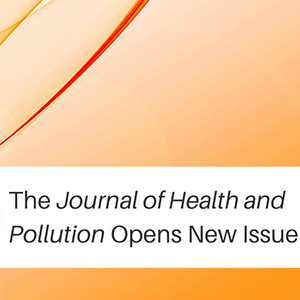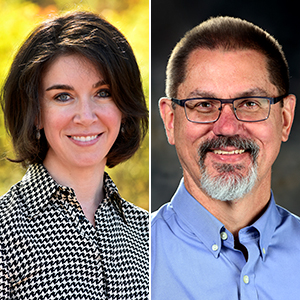 “We’re very interested in the low-dose, chronic exposures that may compromise biological function,” said Woychik, explaining the shift away from the old understanding that the dose makes the poison. (Photo courtesy of Steve McCaw)
“We’re very interested in the low-dose, chronic exposures that may compromise biological function,” said Woychik, explaining the shift away from the old understanding that the dose makes the poison. (Photo courtesy of Steve McCaw)Research suggests that aspects of our environment — such as chemicals, pollution, stimulants, technical gadgets and even stress — are likely contributing to the development of cancer.
The what, when, and how of preventing these exposures was the question explored during a June 24-26 conference, where NIEHS Deputy Director Rick Woychik, Ph.D., presented a keynote address. Environmental Carcinogenesis: Potential Pathway to Cancer Prevention was organized by the American Association for Cancer Research (AACR) and held in Charlotte, North Carolina.
“As environmental health scientists, we are focused on reducing the number of cancer cases through preventive strategies,” said Woychik. “Early detection of genetic damage from environmental genotoxicants can contribute to the reduction of cancer and other diseases.”
The environment, genes, and cancer
The program explored environmental links to cancer development. Presentations addressed such topics as genetic profiling for disease susceptibility, key characteristics of carcinogens’ toxic effects, recent advances in cancer prevention and early detection, and whole genome tumor studies.
Gwen Collman, Ph.D., director of the NIEHS Division of Extramural Research and Training, chaired a session on new ways to measure exposure to carcinogens. She said that the ultimate goal is to develop precision health interventions adapted to each person’s unique biology.
NIEHS perspective
Woychik’s talk, “Challenges and Opportunities in Environmental Carcinogenesis: The NIEHS Perspective,” covered eight major themes.
- Windows of exposure — “Developmental stressors can lead to disease, especially when encountered early in the life cycle,” Woychik said. He cited a study that showed that women who are exposed early in life to the chemical diethylstilbestrol can be at higher risk for later reproductive problems and cancer.
- Mixtures — “At any given time, we are exposed to complex, real-world mixtures of potentially dangerous compounds,” said Woychik. These mixtures include chemicals and infectious agents, which can act in combination to have more severe effects. For example, carriers of the hepatitis B virus who are also exposed to aflatoxin show a 60-fold increase in the incidence of liver cancer.
- The microbiome — New genetic sequencing tools can characterize the DNA of the microbes that live in and on our bodies. “We are interested in correlating changes in the microbiome with the development of cancer and other disease conditions,” said Woychik.
- The exposome, or the totality of one’s environmental exposures, was a popular conference topic. “To better understand the impact of the environment on our health, we have to develop the tools to evaluate all of the elements associated with the environment,” said Woychik.
- Rodent population studies — Rodent studies have undergone a paradigm shift in recent years. “For certain exposure experiments, genetically complex mouse populations better represent human genetic diversity than single mouse strains,” said Woychik. “Moreover, by evaluating differences in individual susceptibility to environmental toxicants, we hope to eventually be able to identify molecular mechanisms of toxicity.”
- Epigenetics — “We used to think that the only way to change the way a gene is expressed was to change its genetic code,” said Woychik. “Now, we’re better able to predict how environmental exposures influence the architecture of the genome, which can influence how the genes are expressed later in life.”
- Tox21 is a long-term, interagency project to develop better methods for quickly assessing the health effects of large numbers of chemicals using the same high-throughput, robotics-based platforms that the pharmaceutical industry uses for drug development.
- All of Us — This ambitious program from the National Institutes of Health aims to collect detailed health information from at least one million people to improve understanding of which variants within the genome of individuals are associated with different types of cancer and other disease conditions. This program is an attempt to bring the concept of personalized health to the prevention strategies within the environmental health community.
AACR was founded in 1907 and is the oldest and largest scientific organization in the world focused on cancer research, according to its website.
Citation: Hoover RN, Hyer M, Pfeiffer RM, Adam E, Bond B, Cheville AL, Colton T, Hartge P, Hatch EE, Herbst AL, Karlan BY, Kaufman R, Noller KL, Palmer JR, Robboy SJ, Saal RC, Strohsnitter W, Titus-Ernstoff L, Troisi R. 2011. Adverse health outcomes in women exposed in utero to diethylstilbestrol. N Engl J Med 365(14):1304–1314.
(John Yewell is a contract writer for the NIEHS Office of Communications and Public Liaison.)









